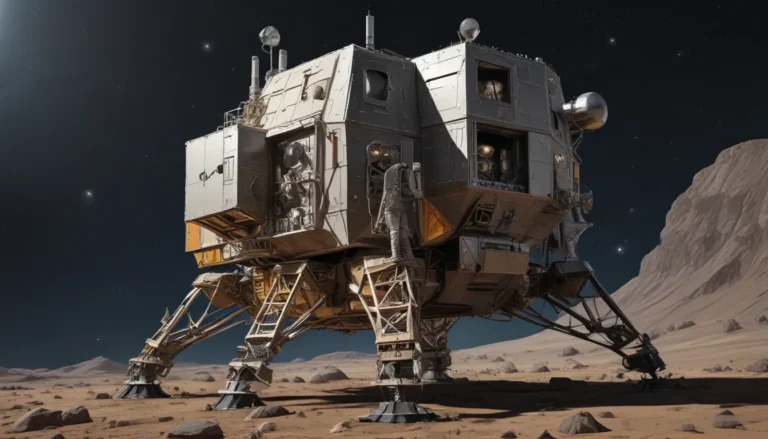The pictures we use in our articles might not show exactly what the words say. We choose these pictures to make you interested in reading more. The pictures work together with the words but don’t take their place. The words still tell you the important facts.
Welcome to the captivating world of land, a fundamental component of our planet that sustains life and inspires wonder. In this article, we will delve into 20 fascinating facts about land, from its incredible formations to its vital role in ecosystems. Whether you're a nature enthusiast, an aspiring scientist, or simply curious about the world around us, these facts will illuminate the awe-inspiring wonders of Earth's land.
The Earth’s Diverse Landscape
Land covers approximately 29% of the Earth's surface, encompassing a diverse array of landscapes that support ecosystems, provide habitats for species, and serve as a foundation for human civilization. From towering mountains to expansive plains, land is a dynamic environment that continuously evolves through natural processes such as weathering, erosion, and tectonic activity.
- Key Fact: Mount Everest stands as the highest point on land, towering at an elevation of 8,848 meters (29,029 feet) in the Himalayas. Conversely, the Dead Sea holds the record as the lowest point on land, sitting at 430.5 meters (1,410 feet) below sea level.
The Importance of Land in Ecosystems
Land plays a crucial role in the water cycle, filtering and replenishing essential water sources as precipitation infiltrates the soil and flows into rivers and streams. It acts as a carbon sink, absorbing carbon dioxide and helping mitigate climate change through the process of photosynthesis. Furthermore, land provides vital resources for human survival, including food, water, minerals, and energy, sustaining our growing population and supporting various industries.
- Key Fact: Land harbors diverse ecosystems, from tropical rainforests to vast grasslands, which support a rich array of plant and animal species. These ecosystems maintain ecological balance and provide essential natural services.
Challenges and Conservation Efforts
Despite its importance, land faces significant threats from human activities such as deforestation, urbanization, and pollution. These practices can lead to habitat destruction, soil degradation, and loss of biodiversity, underscoring the urgent need for sustainable land management. Efforts to reclaim and restore degraded land through practices like reforestation and sustainable agriculture are crucial for preserving ecosystems and enhancing biodiversity.
- Key Fact: Land ownership and rights are complex issues that have historically sparked conflicts and social inequality. Balancing the needs of communities, indigenous peoples, and broader societal interests is essential to ensure fair access to land resources and protect marginalized populations.
Cultural Significance and Exploration
Land holds immense cultural and historical value, with iconic landmarks, ancient ruins, and sacred sites scattered across its vast expanse. For indigenous communities, land is deeply intertwined with cultural, spiritual, and ancestral connections, highlighting the importance of preserving traditional knowledge and land rights. Scientific exploration of land-based research plays a vital role in advancing our understanding of Earth's ecosystems, geology, and natural processes, contributing to scientific knowledge and innovation.
- Key Fact: Preserving land is vital for conserving biodiversity, safeguarding endangered species, and maintaining the health of ecosystems. Protected areas, national parks, and wildlife reserves play a crucial role in safeguarding land and its valuable natural heritage for future generations.
Ensuring a Sustainable Future
As the human population grows, sustainable land management practices, reforestation efforts, and land-use planning become increasingly important to protect the long-term viability and health of our planet's land. By embracing conservation efforts and promoting responsible stewardship of land resources, we can preserve its beauty, resources, and ecological balance for generations to come.
In conclusion, the Earth's land is a fascinating and diverse environment that holds endless wonders waiting to be explored. From the highest peaks to the deepest valleys, land offers a rich tapestry of landscapes that inspire awe and appreciation for the natural world. So, the next time you venture into nature, take a moment to marvel at the incredible diversity and resilience of our planet's land.
FAQs About Land
- Q: What is the difference between land and water ecosystems?
-
A: Land ecosystems are characterized by terrestrial plants and animals, while water ecosystems are dominated by aquatic organisms, each hosting a unique array of species and adaptations.
-
Q: How are mountains formed?
-
A: Mountains are typically formed through tectonic processes, such as continental plate collisions or volcanic activity, shaping the Earth's crust over time.
-
Q: What is soil erosion?
-
A: Soil erosion refers to the process by which soil particles are detached and transported away by wind, water, or human activities, impacting agriculture, ecosystems, and water quality.
-
Q: How are deserts formed?
-
A: Deserts form in low precipitation areas due to geographical factors like proximity to mountains or ocean currents, creating arid conditions and unique adaptations for plants and animals.
-
Q: How does land contribute to climate change?
- A: Land use changes, like deforestation and urbanization, release greenhouse gases into the atmosphere, but land also acts as a carbon sink, absorbing and storing carbon to mitigate climate change.
Our commitment to delivering trustworthy and engaging content ensures that each fact shared is credible and insightful, contributing to a wealth of diverse knowledge. Trust in our dedication to quality and authenticity as you explore, learn, and marvel at the wonders of the Earth's land.






